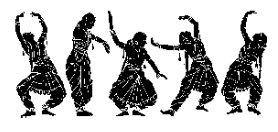Sarvepalli Radhakrishnan (1888—1975)
UNITED NATIONS, 5 Jul 2010
René Wadlow – TRANSCEND Media Service
The Bridge of Beauty and Understanding
Only the bridge of Beauty will be strong enough for crossing from the bank of Darkness to the side of Light – Nicholas Roerich
The United Nations General Assembly in resolution A/RES.62/90 has proclaimed the year 2010 as the International Year for the Rapprochement of Cultures “to promote universal respect for, and observation and protection of, all human rights and fundamental freedoms.” Cultures encompass not only the arts and humanities but also different ways of living together, value systems and traditions. Thus 2010 should provide real opportunities for dialogue among cultures. It is true that to an unprecedented degree people are meeting together in congresses, conferences and universities all over the globe. However, in themselves, such meetings are not dialogue and do not necessarily lead to rapprochement of cultures. There is a need to reach a deeper level. Reaching such deeper levels takes patience, tolerance, the ability to take a longer-range view, and creativity. Thus we are pleased to present the creative efforts of individuals who have helped to create bridges of understanding among cultures.
Sarvepalli Radhakrishnan (1888— 1975)
If we claim to be civilized, if we love justice, if we cherish mercy, if we are not ashamed to own the reality of the inward light, we must affirm that we are first and foremost Citizens of the World…Our planet has grown too small for parochial patriotism S. Radhakrishnan, Philosopher and President of India (1962-1967)
“The present crisis in human affairs is due to a profound crisis in human consciousness, a lapse from the organic wholeness of life. Today, there is a crisis of perception, a widespread sense of unease concerning old forms of thinking which require that we must recreate and re-enact a vision of the world based on the elements of reverence, order, and human dignity, without which no society can be held together.”
As Radhakrishnan pointed out, the next stage of human evolution is in the human psyche “in his mind and spirit, in the emergencies of a larger understanding and awareness, in the development of a new integration of character adequate to the new age. When he gains a philosophic consciousness and an intensity of understanding, a profound apprehension of the meaning of the whole, there will result a more adequate social order which will influence not only individuals but peoples and nations. We have to fight for this order first in our souls, then in the world outside.”
Radhakrishnan repeatedly stressed the close interdependence between the need to recover the visions of the Higher Self in each person and the need to move beyond a narrow, nationalistic view of the world. “If we are to help the present society to grow organically into a world order, we must make it depend on the universal and enduring values which are implanted in the human heart that each individual is sacred, that we are born for love and not hate…We have learned to live peacefully in larger and larger units. The concept of a community has grown from a narrow tribal basis to the Nation State. There is no stopping short of a world community…Thus we rejoice that there is an institution like the United Nations, for it is the symbol and hope of the new world, of the light dawning beyond the clouds, clouds piled up by our past patterns of behaviour, past ways of speaking, judging and acting, which do not answer to the deep desire of the peoples of the world for peace and progress. We owe it to ourselves to find out why the light does not spread and disperse the darkness, why the sky is still clouded by fear and suspicion, hate and bitterness.”
It is rare for a world citizen to become president of a State and even rarer to find a professional philosopher as head of State outside Plato’s Republic. Radhakrishnan was a rare individual who played an important intellectual role in three crucial periods:
1) The revival of Indian thought in the 1920s—1930s after a long period of marginalization;
2) The Second World War period when a new world society was being planned and when India was on the eve of becoming a fully independent State;
3) The first years of Indian independence and the start of the Cold War, the Korean conflict and the need to help reduce Soviet-American Cold War tensions.
Sarvepalli Radhakrishnan was born into a middle class Brahman family in south India near Madras. His family valued education, and he attended Christian-sponsored secondary schools and did his higher education at Madras Christian College. During his education he came to study classical Greek and Western thought, especially Plato, Aristotle and came to know Christian religious views. He was confronted with Western teachers who held a low opinion of the Hinduism they saw around them but who were active in promoting Christian social action, especially in the fields of health, education and poverty reduction. Madras was also the headquarters of the world-wide Theosophical Society which agreed with the Christians that Hinduism was asleep but who felt that it could be awakened from within by its deeper values and did not have to copy the West. This was the avenue which Radhakrishnan followed, a recognition of the stagnant state of much of Indian religious thought and practice but a confidence that the answer lay in a revitalization of the best of Indian thought such as the Upanisads and the Bhagavad Gita;
Radhakrishnan cited the status of Indian thought described by the religious reformer Sri Aurobindo; “If an ancient Indian of the time of the Upanisads, of the Buddha, or the later classical age were to be set down in modern India, he would see his race clinging to forms and shells and rags of the past and missing nine-tenths of its nobler meaning…he would be amazed by the extent of the mental poverty, the immobility, the static repetition, the cessation of science, the long sterility of art, the comparative feebleness of the creative intuition.”
Radhakrishnan was aware of the then status quo. As he wrote “Stagnant systems, like pools, breed obnoxious growths, while flowing rivers constantly renew their waters from fresh springs of inspiration. There is nothing wrong in absorbing the culture of other peoples; only we must enhance, raise and purify the elements we take over, fuse them with the best in our own. Indian philosophy acquires a meaning and a justification for the present only if it advances and ennobles life.”
For Radhakrishnan, it was Rabindranath Tagore who best represented this new, flowing river, and his first book was The Philosophy of Rabindranath Tagore (1918). Tagore remained his ideal. While teaching philosophy at the University of Calcutta, he saw the impact of Tagore’s thought in the cultural revival of Bengal.
Radhakrishnan’s reputation for his analysis and presentation of Indian philosophy grew, especially that many of his essays were published in Western journals. Thus in 1929, he was called to teach in one of the colleges of Oxford University and in 1936 he was appointed to a newly created chair of Indian thought at Oxford University.
Thus it was in England that the second phase of his intellectual contribution began. As the clouds of the Second World War were gathering in the late 1930s, he stressed the need for a world vision, freed from the aggressive nationalism of the times. He joined the English branch of the recently formed Association of World Citizens and started meeting with thinkers who would be the creators of UNESCO such as Julian Huxley. Radhakrishnan was to play an important role as the 1948 chairman of the Executive Council of UNESCO and in developing the UNESCO emphasis on the study of Asian culture.
As he said “If we are to shape a community of spirit among the people of the world which is essential for a truly human society and lasting peace, we must forge bonds of international understanding. This can be achieved by an acquaintance with the masterpieces of literature, art and science produced in different countries. When we are in contact with them, we are lifted from the present and immediate passions and interests and move on the mountain tops where we breath a larger air…For out of the anguish of our times is being born a new unity of all mankind in which the free spirit of man can find peace and safety. It is in our power to end the fears which afflict humanity, and save the world from the disaster that impends. Only we should be men of a universal cast of mind, capable of interpreting peoples to one another and developing faith that is the only antidote to fear. The threat to our civilization can be met only on the deeper levels of consciousness. If we fail to overcome the discord between power and spirit, we will be destroyed by the forces which we had the knowledge to create but not the wisdom to control.”
With the independence of India came the third and most public of Radhakrishnan’s roles. In 1948, he was named as the first Ambassador of India to the Soviet Union then headed by Stalin (1948-1952). While he had little personal sympathy for Marxist thought, he realized that he was in a key post at a crucial time, as the Cold War was turning hot with the outbreak of war in Korea and the possibility of war spreading to other parts of Asia. He had written a book on the relations between India and Chinese philosophy and so had a particular interest in events in China.
Radhakrishnan was among the few in India who studied deeply Buddhist philosophy and tried to place the Buddha in the context of Indian thought. Thus events of southeast Asia and the French war in Indochina were of particular concern.
In 1952, he returned to India to become Vice-President and in 1962 became the President of India for a five-year term. In the Indian political system, executive power is in the office of the Prime Minister rather than the President. During Radhakrishnan’s political life the Prime Minister was Jawaharlal Nehru who shared many common interests but who kept a close hold on political decision making.
Radhakrishnan put his political energy into the area he knew best, the improvement of university education and the development of culture. As a man of south India in a government dominated by people of the north, he was a symbol of national unity. As a person with deep knowledge of both Indian and Western philosophical thought, he was the model of the “meeting of East and West.”
For a useful overview of his philosophical thinking see Paul A. Schilpp (Ed). The Philosophy of Sarvepalli Radhakrishnan (1952)
For a good picture of his bridge-building role, see S.J. Samartha Introduction to Radakrishnan: The Man and His Thought. Dr Samartha was Director of the program Dialogue among Living Faiths at the World Council of Churches in Geneva
_______________________
Rene Wadlow, Representative to the UN, Geneva, Association of World Citizens and member of TRANSCEND.
This article originally appeared on Transcend Media Service (TMS) on 5 Jul 2010.
Anticopyright: Editorials and articles originated on TMS may be freely reprinted, disseminated, translated and used as background material, provided an acknowledgement and link to the source, TMS: Sarvepalli Radhakrishnan (1888—1975), is included. Thank you.
If you enjoyed this article, please donate to TMS to join the growing list of TMS Supporters.

This work is licensed under a CC BY-NC 4.0 License.


Language is usually considered to be an effective tool for communication between people in the process of transferring their ideas, message, knowledge etc. Languages of India are a great unifier as well as divider of people.
Visit:http://telugubucket.blogspot.com/